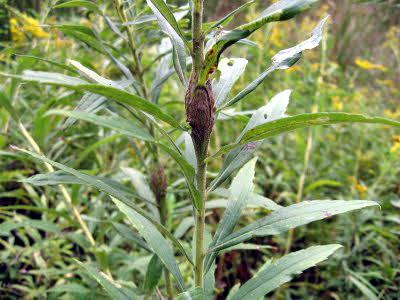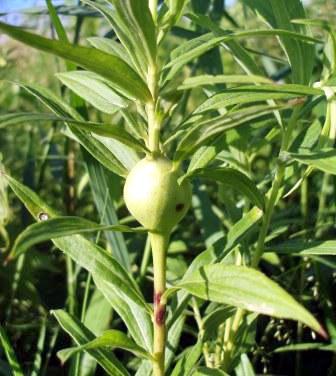by Adriano Panaroni, adapted and reprinted with permission from the High Park Nature Centre blog.
Since insects are cold blooded, they become slower as the weather gets colder until many of them enter a form of hibernation, diapause. In addition they also “migrate” in a sense, but instead of going north to south they go up to down, from in the sky, trees, and shrubs to roots, burrows, and underneath leaves as well as other intriguing places.
To get through the winter, some moths, wasps and flies take shelter in a “gall”. Galls are deformations in a plant which look like bulges or bulbs. There is quite a bit of mystery surrounding their creation but what is known is that they are caused by insects irritating the plant either physically or chemically.
One of the most common galls is the Elliptical Goldenrod Gall. A moth deposits its egg on a goldenrod leaf which, upon hatching, will burrow through the stem and the plant will form a gall around the larva. Now technically the moth will not be in the gall in winter, as it reaches its adult stage by fall. However, there are wasps that can deposit eggs in the gall, which hatch and feed on the larva inside, spend the winter and then emerge as an adult. Empty galls are also reused by bees, ants, and beetles.
The elliptical Goldenrod Gall can be easily confused for the Goldenrod Ball Gall, but as the name suggests the former has an elliptical shape and the latter a rounded spherical one. The Ball Gall is caused by a spotted-winged fly, which follows a similar procedure to the moth in the Elliptical gall, except it hibernates in the gall as a larva over winter. This makes it susceptible to beetles breaking in, eating the helpless larvae and taking the gall for their own winter needs.


























